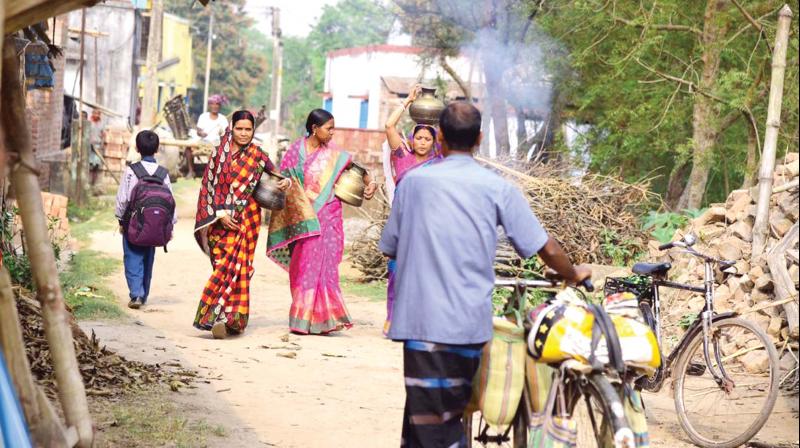Art that voices people's concerns
Shamin believes that an art form like Gombhira is the need of the hour. He hopes his work will inspire people.

The word Gombhira may not be familiar to everyone. It was the same with Shamin T., a multi-media graduate and ad film associate from Kannur. He came across the word while scripting his dream feature film project. The word stuck with him, and the curious Shamin started researching about it, eventually directing the documentary Gombhira.
“In the movie script, there was a reference about the Mahananda River that flows through the old Malda town. My research about Mahananda took me to Gombhira, a folk performance that discusses current issues,” says Shamin. “Malda has an interesting history. When all states in India celebrated independence on August 15, 1947, Malda was mourning as it was marked as a part of the then East Pakistan. People of Malda fought for freedom and joined India after three days. So, they celebrate Independence Day three days after we do,” adds Shamin.
The art form Gombhira always played a crucial role in raising their concerns. “Gombhira is equivalent to our Ottan Thullal. It is a satirical take on current issues. If they spoke against colonisation during the British era, they discuss issues such as global warming, terrorism and substance abuse now,” explains Shamin, who travelled all the way to Malda to dig more about Gombhira. It was not easy; language was one of the main barriers. Transportation, too, was difficult. “Initially, I searched on the internet to understand the art form. Then, I connected with a few persons in Malda, and later visited the place for pilot study. I had to depend upon translators. People of Malda speak pucca Bengali,” he recalls.
Shamin spent one year to make Gombhira that mainly focuses on the art form’s performance style. “Music and dance are two main components of Gombhira. There would be four to five persons on stage singing and dancing about socially relevant topics. During earlier days, Gombhira was presented at the temples of Lord Shiva in the form of prayers. People would praise Shiva and when he appears before them, they would tell their worries to him. Though the art form evolved with time and moved out of temples to open stages, there would still be an idol of Shiva installed on the stage during the performance,” says Shamin. The documentary also touches upon the history of Malda.
Shamin believes that an art form like Gombhira is the need of the hour. He hopes his work will inspire people. “I decided to do Gombhira because I wanted our society, at least a section, to know about such a powerful tool of communication,” he says. Gombhira will be released in February.

